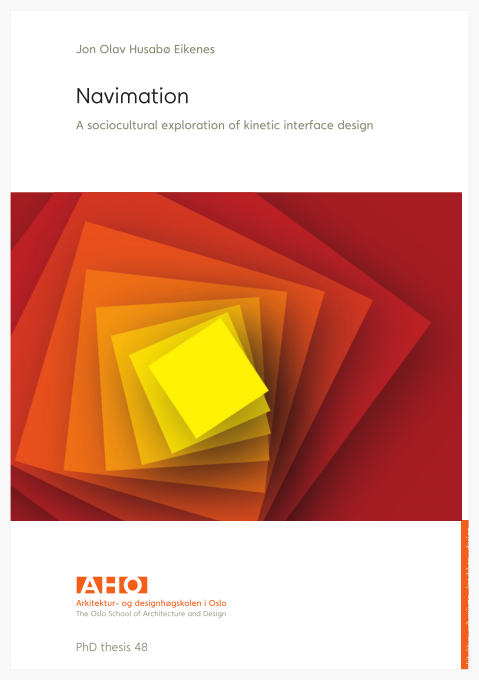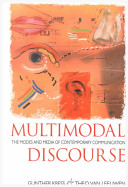Research
Interfaces
Eikenes, J. O. (2010). Navimation: A sociocultural exploration of kinetic interface design. Oslo School of Architecture and Design.
Morrison, A., Westvang, E., & Skogsrud, S. (2010). Whisperings in the Undergrowth: Communication Design, Online Social Networking and Discursive Performativity. In I. Wagner, T. Bratteteig, & D. Stuedahl (Eds.), Exploring Digital Design SE - 8 (pp. 221–259). Springer London. (On the norwegian social site Underskog.)
Andersen, C. U., & Pold, S. B. (2011). Interface criticism: Aesthetics beyond the buttons. Aarhus University Press.
Activity theory
Vygotsky, L. S. (1978). Mind in society: The development of higher mental process. Cambridge, MA: Harvard University Press.
Social semiotics & semiotics
Lemke, J. (1995). Textual politics: discourse and social dynamics. (T. & Francis, Ed.)London, Bristol, PA.
Crow, D. (2010). Visible signs: an introduction to semiotics in the visual arts. Ava Publishing.
Design materials
Hansen, L. A. (2014). Communicating Movement: Full-body Movement as a Design Material for Digital Interaction. AHO.
Hallnäs, L., Melin, L., & Redström, J. (2002). Textile displays: using textiles to investigate computational technology as design material. In Proceedings of the second Nordic conference on Human-computer interaction (pp. 157–166). ACM.
Multimodal analysis
Kress, G., & Van Leeuwen, T. (2001). Multimodal discourse: The modes and media of contemporary communication. Edward Arnold.
Kress, G. R., & Van Leeuwen, T. (1996). Reading images: The grammar of visual design. Psychology Press.
Other readings
Since I suck at reading a book from start to finish, these tend to last for a while:
The Asterix comic books - love'em, need'em and learn a lot from these books about communicating through graphics and typography, Uderzo the illustrator is a genius at it.
Truls Gjefsen (my high school teacher!): Biography of the philosopher Arne Næss
The beautiful magazine The Gentlewoman, one of few bright and insightful magazines about great women
Finn Skårderud: Uro
Dag O. Hessen & Thomas Hylland Eriksen: På stedet løp
Sheryl Sandberg: Lean In
Walter Isaachson: Steve Jobs - my car-audiobook
And a book about training hunting dogs!
Stuff I watch
Trees in the forest and mountains! [Hiking with my dog]
Wild - again: there are so few good and genuine stories told in popular culture on women, especially films like this one from Hollywood. Too many films portray women as beautiful wrapping with no intellectual capacity whatsoever.
Silicon Valley tv series - fun stuff
Inside Amy Schumer - even more fun
Beautiful graveyard tombstones - especially fascinated by old names and typography [walking my dog in the Vår Frelsers Gravlund, Oslo]
Enlightened with Laura Dern
Mad Men - not done with the last season yet
Reruns of old Sex and the City-episodes that I like, despite people trying to force it into the guilty-pleasure-category.




















